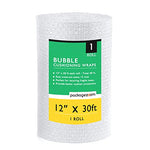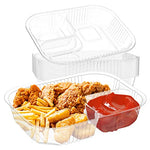You have no items in your shopping cart.
Recycling paper is not just about saving trees; it's about preserving our planet for future generations. In this comprehensive guide, we'll delve into the myriad benefits of recycling paper and provide practical tips on how to do it properly. From reducing landfill waste to conserving energy, recycling paper offers numerous advantages that extend far beyond the act itself. Let's explore why recycling paper is a crucial step towards a sustainable future and how you can play your part in this global initiative.
Table of Contents:
| Heading | Subheading |
|---|---|
| The Importance of Recycling Paper | Understanding the Environmental Impact |
| Reducing Deforestation | |
| Minimizing Landfill Waste | |
| Benefits for Businesses and Communities | Cost Savings |
| Corporate Responsibility | |
| Community Engagement | |
| How to Recycle Paper Properly | Sorting and Collection |
| Preparation and Contamination Control | |
| Recycling Methods and Facilities | |
| Creative Ways to Recycle Paper | Upcycling and DIY Projects |
| Composting | |
| FAQs | What types of paper can be recycled? |
| Is glossy or colored paper recyclable? | |
| How does recycling paper benefit the environment? | |
| Can shredded paper be recycled? | |
| What should I do with paper that can't be recycled? | |
| Where can I find recycling centers near me? | |
| Conclusion | Embracing Sustainable Practices |
The Importance of Recycling Paper
Understanding the Environmental Impact
Recycling paper significantly reduces the demand for virgin pulp, the primary ingredient in paper production. By utilizing recycled paper fibers, we can conserve natural resources and mitigate the environmental impact of deforestation.
Reducing Deforestation
The production of paper often involves the harvesting of trees, leading to deforestation and habitat loss. By recycling paper, we can lessen the need for logging, thereby preserving valuable ecosystems and biodiversity.
Minimizing Landfill Waste
Paper constitutes a significant portion of municipal solid waste, contributing to overflowing landfills and environmental pollution. Recycling paper diverts this waste from landfills, reducing greenhouse gas emissions and alleviating pressure on waste management systems.
Benefits for Businesses and Communities
Cost Savings
Recycling paper can yield substantial cost savings for businesses through reduced waste disposal fees and lower procurement expenses for raw materials. Additionally, implementing recycling initiatives can enhance corporate image and attract environmentally-conscious customers.
Corporate Responsibility
Demonstrating a commitment to environmental sustainability not only benefits the planet but also enhances brand reputation and fosters customer loyalty. By incorporating paper recycling into corporate practices, businesses can fulfill their social responsibility while contributing to a greener future.
Community Engagement
Engaging in paper recycling initiatives fosters a sense of community involvement and collective responsibility. Collaborating with local organizations and municipalities can amplify the impact of recycling efforts and promote environmental stewardship within communities.
How to Recycle Paper Properly
Sorting and Collection
Begin by sorting paper waste into categories such as office paper, newspaper, magazines, and cardboard. Utilize designated recycling bins or containers to separate recyclable materials from non-recyclables.
Preparation and Contamination Control
Remove any contaminants such as staples, tape, or food residue from paper items to ensure they can be processed efficiently. Keep paper dry and free from moisture to prevent degradation during the recycling process.
Recycling Methods and Facilities
Research local recycling facilities or collection centers that accept paper materials. Familiarize yourself with the recycling guidelines and procedures specific to your area to maximize the effectiveness of recycling efforts.
Creative Ways to Recycle Paper
Upcycling and DIY Projects
Explore innovative ways to repurpose old paper items through upcycling projects such as handmade crafts, decorations, or gift wrapping. Get creative and transform paper waste into functional and aesthetic creations.
Composting
Incorporate paper products into composting systems to enrich soil and support organic waste recycling. Paper materials such as cardboard, newspaper, and shredded office paper can be composted alongside kitchen scraps and yard waste.
FAQs
What types of paper can be recycled? Most types of paper, including office paper, newspaper, magazines, cardboard, and paperboard, can be recycled.
Is glossy or colored paper recyclable? Yes, glossy and colored paper can typically be recycled, but it's essential to check with local recycling guidelines as some facilities may have specific requirements.
How does recycling paper benefit the environment? Recycling paper conserves natural resources, reduces energy consumption, and mitigates greenhouse gas emissions associated with paper production.
Can shredded paper be recycled? Yes, shredded paper can be recycled, but it's recommended to contain it within a paper bag or cardboard box to prevent it from becoming a nuisance during the recycling process.
What should I do with paper that can't be recycled? Consider alternative disposal methods such as composting or repurposing paper items for creative projects to minimize waste and environmental impact.
Where can I find recycling centers near me? Search online directories or contact local waste management authorities to locate recycling centers or drop-off locations in your area.
Embracing sustainable practices such as paper recycling is paramount in our collective efforts to safeguard the environment and promote a greener future. By recognizing the benefits of recycling paper and adopting proper recycling techniques, individuals, businesses, and communities can contribute to a more sustainable and eco-friendly world.







![100% Compostable 9 Inch Paper Plates [125-Pack] Heavy-Duty, Natural Disposable Bagasse Plate, Eco-Friendly Made of Sugarcane Fibers - Natural Unbleached Brown 9" Biodegradable Plate by Stack Man](http://www.trashrite.com/cdn/shop/products/418LbW6FSUL_150x150_crop_center.jpg?v=1689802541)
